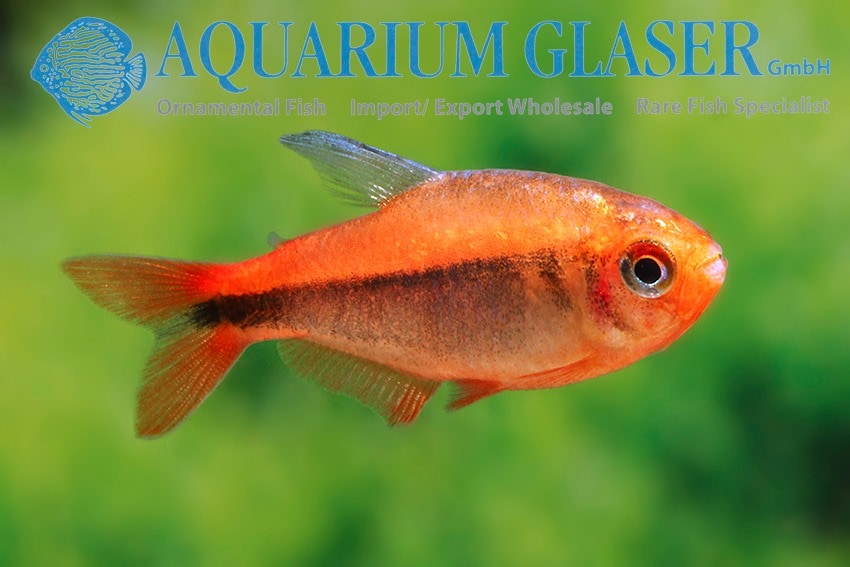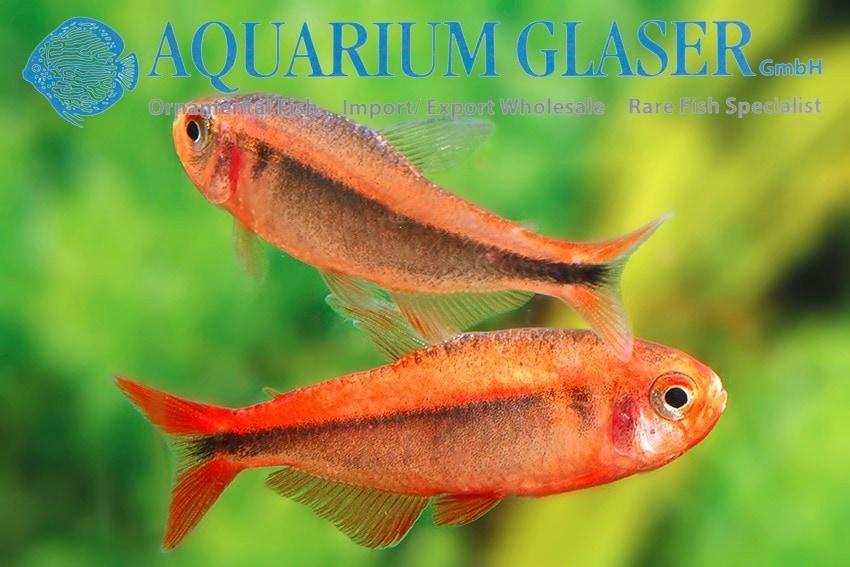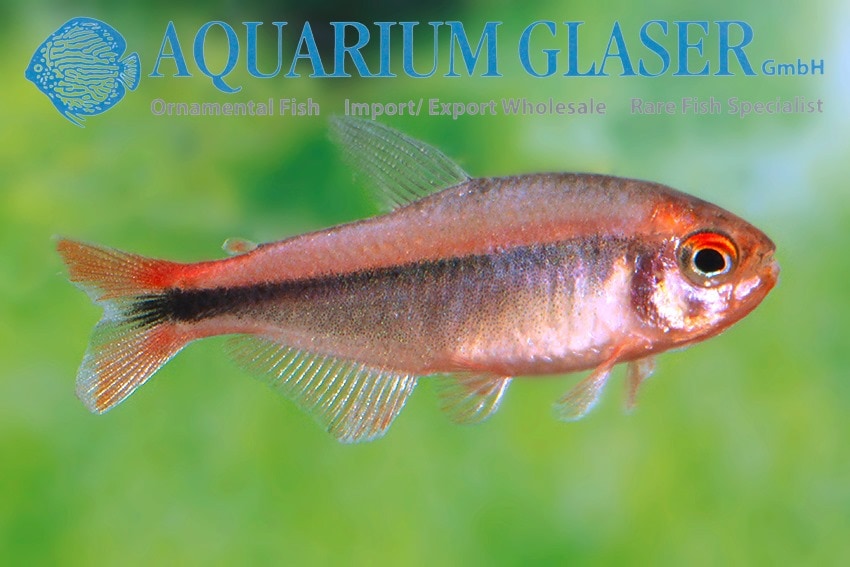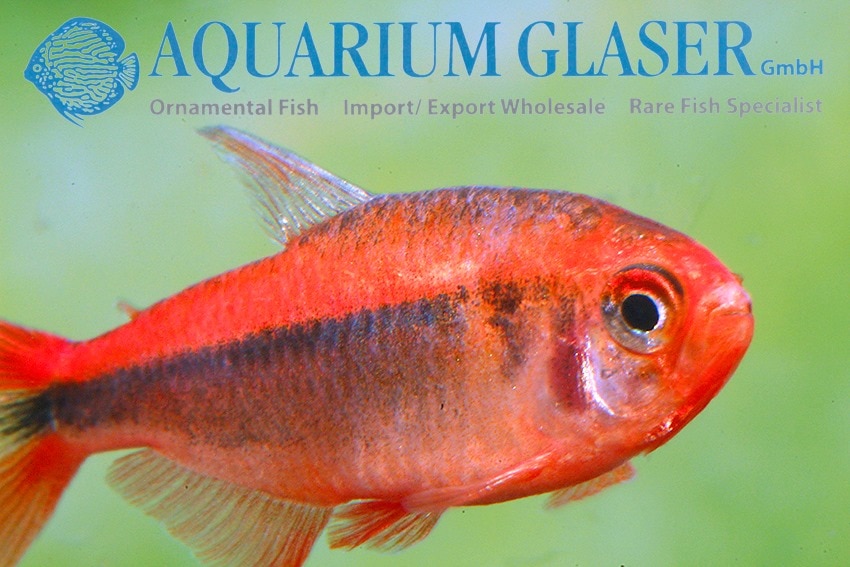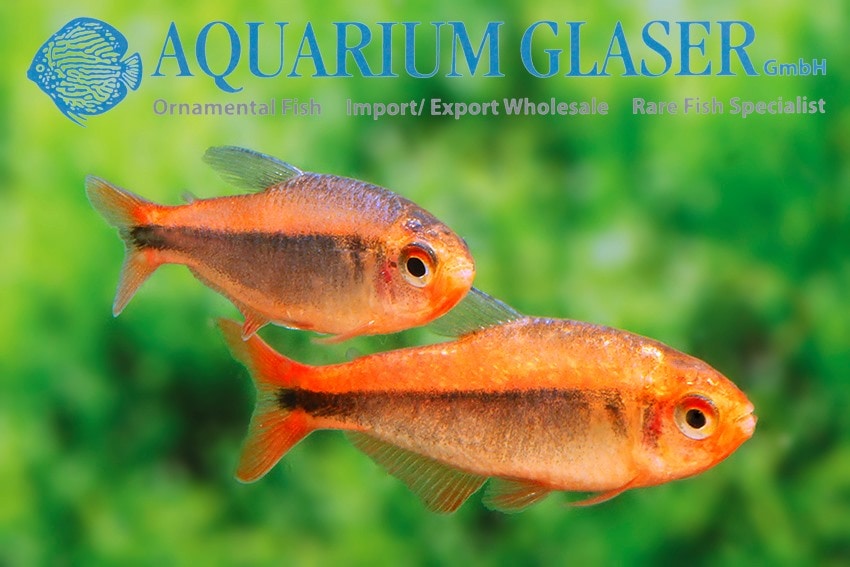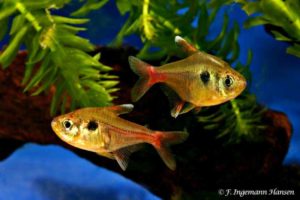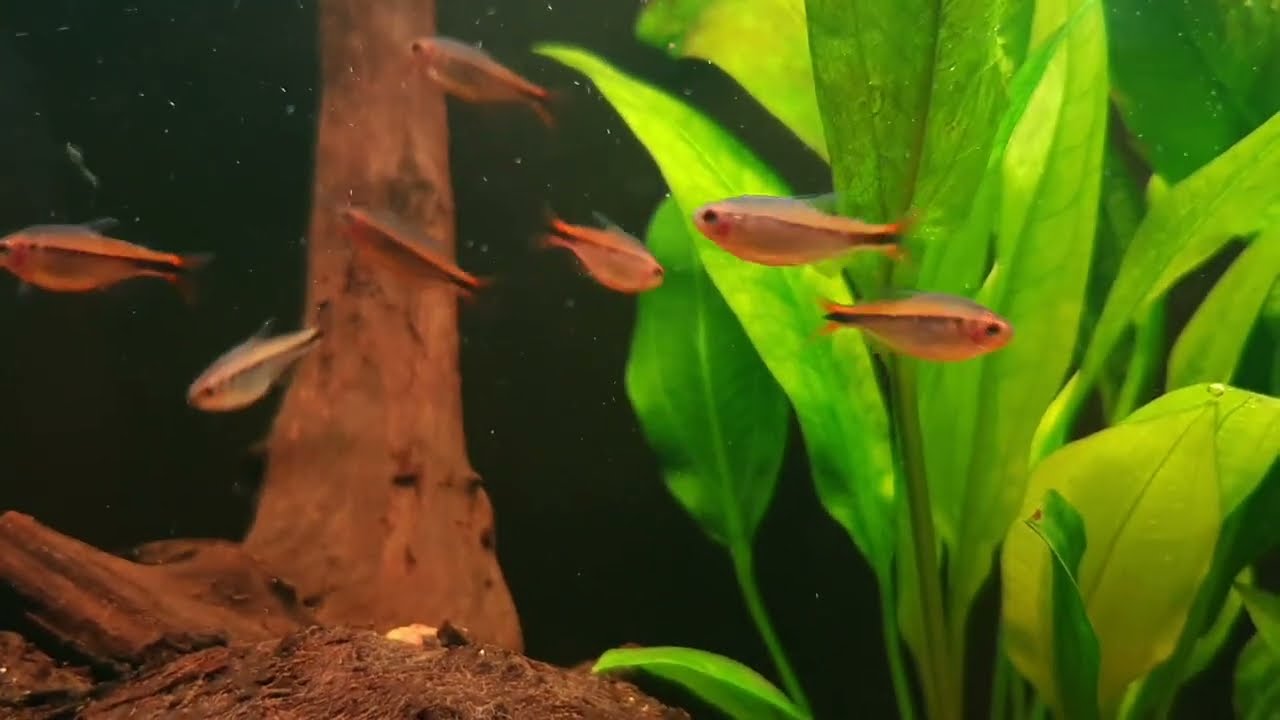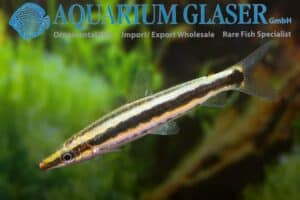Hyphessobrycon myrmex – Fire Ant Tetra
Hyphessobrycon myrmex was first described by Pastana, Dagosta & Esguícero in 2017. The fish belongs to the family Acestrorhamphidae, better known as the American Tetras.
The genus name Hyphessobrycon is of Greco-Latin origin. The first part, “Hyphessobrycon,” is possibly derived from the Greek “hyphesson” (slightly smaller) and the Greek “bryko” (to bite). The species name myrmex comes from the Greek word for “ant,” referring to the small size of the adults and the type-finding site, the Rio Formiga (meaning “ant river” in Portuguese). In English they are also called Fire Ant Tetra, in Dutch the Fire Ant Tetra.
Appearance, Behavior and Life Expectancy of Hyphessobrycon myrmex
Hyphessobrycon myrmex, also known as the Fire Ant Tetra, is a small, slender fish with a compressed (laterally flattened) body. A darker stripe runs from the flank of the gill to the tail, fading towards the bottom. There is a light, net-like pattern on the upper three horizontal rows of scales, formed by a concentration of chromatophores (colour cells) at the rear of the scales. The dorsal fin is transparent. The belly, chest and anal fins have red accents. The adult fish reaches a maximum length of about 2-3 cm.
Sex differences: There is a striking difference in coloration between males and females (sexual dichromatism). Adult males are bright red to orange in color, while females and young fish are a pale yellow color. The pectoral and pelvic fins of males are slightly larger than those of females. In males , the tip of the pectoral fin extends to the origin of the pelvic fin when pressed against the body, while this is not the case in females. The tip of the pelvic fin of males can reach or fall close to the base of the anal fin, while this is not the case in females. The base of the anal fin is convex in males and approximately straight in females. The anal fin lobe has a pointed profile in males due to the longer anterior branched anal fin rays; in females it is smooth. Behavioral differences between the sexes are not explicitly stated in the documents, but males probably form small territories that they defend with small, non-aggressive fights.
Juveniles versus adults: Juvenile Hyphessobrycon myrmex are paler in color than the adult males, and look more like the adult females. As they get older, males develop their distinctive red coloration.
Behavior and temperament: Hyphessobrycon myrmex is a peaceful fish best kept in a group of at least five to ten specimens. They are schooling fish and like to swim in a shoal. They are not shy and swim in the middle waters of the aquarium. They prefer an aquarium with dense vegetation and other hiding places.
Life expectancy: The life expectancy of Hyphessobrycon myrmex in the wild is unknown. In an aquarium, they can live about 3 to 5 years.
Biotope of Hyphessobrycon myrmex
Hyphessobrycon myrmex is endemic to Brazil. The fish live in the upper part of the Rio Juruena basin, in the headwaters of the Rio Tapajós basin in Mato Grosso state and in the Rio Formiga, a tributary of the Rio Juruena.
Their natural habitat consists of clear, relatively large rivers with abundant aquatic plants. In some areas, the rivers are narrow (10-15 meters wide) and shallow (up to 1.8 meters deep), with fast-flowing water. The banks may be covered with vegetation. The bottom consists of rocks, sand and a moderate amount of plant debris.
Diet of Hyphessobrycon myrmex
Diet in the wild: Stomach content analyses of Hyphessobrycon myrmex in the wild have shown that their diet consists of a mix of food sources. They eat filamentous algae (about 10%), tissue of vascular plants (about 6%), microcrustaceans (about 10%), dancing midge larvae (Chironomidae – about 10%), and diurnal fly nymphs (Ephemeroptera – about 64%). Based on this, the species can be considered omnivorous, with a preference for invertebrates.
Diet in the aquarium: In the aquarium, Hyphessobrycon myrmex can be fed a varied diet. High quality dry food, such as flakes or pellets, can form the basis of their diet. In addition, they can occasionally be fed live, frozen or freeze-dried foods such as Artemia, Daphnia, mosquito larvae and bloodworm. Fine granular food is also well accepted. A varied diet contributes to fish health, vitality and vibrant colors. It is important to provide food suitable for small fish.
The Aquarium
For a group of five to ten Hyphessobrycon myrmex, an aquarium of at least 60 centimeters is recommended. For larger groups , the aquarium should be enlarged proportionally; count on about 10 liters extra per additional fish.
The layout of the aquarium can be made to resemble the fish’s natural habitat. A dense planting with fine-leaved plants, such as Java moss, is great for creating hiding places. Floating plants also help create a more natural environment. The bottom can consist of fine sand or a mix of sand and gravel. Avoid sharp materials that can injure fish. Wood and roots can be added for additional hiding places and a more natural look. Rocks are not strictly necessary, but can be added as part of the decoration.
The ideal water conditions for Hyphessobrycon myrmex are soft to moderately hard water (2-15 dGH), slightly acidic to neutral (pH 6.0-7.5) and a temperature between 22°C and 28°C. Regular water changes (25% per week) are important to maintain water quality.
Suitable aquarium mates include other small, peaceful fish species, such as other small tetras, dwarf Corydoras, and small, non-aggressive bottom dwellers. Avoid larger or aggressive fish that might threaten Hyphessobrycon myrmex.
Breeding Hyphessobrycon myrmex
Breeding of Hyphessobrycon myrmex in captivity is successfully performed, resulting in greater availability of the fish on the market. However, specific details about the breeding methods are not described. However, it is mentioned that a separate breeding aquarium is recommended for breeding a significant number of young.
The recommendations for a breeding aquarium are as follows:
- Size: Not specifically mentioned, but a small aquarium is sufficient.
- Water quality: Soft, slightly acidic to neutral (pH 6.0-7.5), temperature 26-28°C .
- Lighting: Weakly lit, as the eggs and young are sensitive to light.
- Filter: An air-driven sponge filter is recommended for gentle filtration.
It is recommended to remove the adult fish after spawning to prevent them from eating the eggs.
Video
Author
John de Lange
Copyright images
